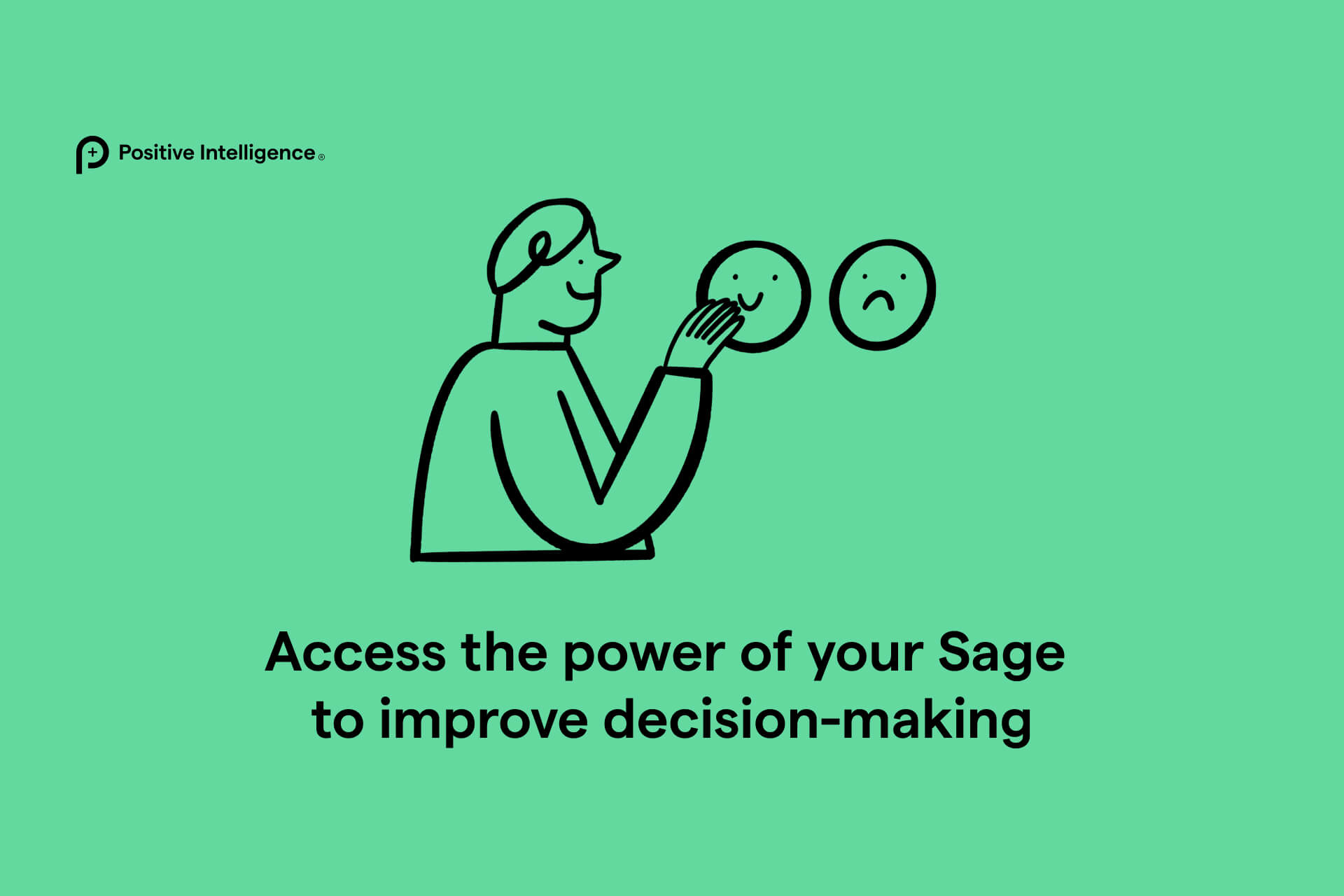
Individual
A self-facilitated program to boost your mental fitness for personal and professional growth
This website will offer limited functionality in this browser. We only support the recent versions of major browsers like Chrome, Firefox, Safari, and Edge.

Select the experience that fits your needs

A self-facilitated program to boost your mental fitness for personal and professional growth

A self-facilitated mental fitness program with exclusive pricing for 2 to 25 individuals

Explore coach-led mental fitness programs with workshops tailored to your organization
Mental Fitness

The rational mind is an incredible tool. It helps us execute plans, manage budgets, and optimize processes. Because of this, we often believe our achievements are products of pure analysis, logic, and data-driven reasoning.
But what if the most important decisions in life and business aren’t made by the rational mind at all, but by a different, deeper kind of wisdom?
Albert Einstein said, “The intuitive mind is a sacred gift and the rational mind is a faithful servant. We have created a society that honors the servant and has forgotten the gift.”
The truth is, we need the analytical mind (our faithful servant) for daily tasks. But the biggest breakthroughs, the clearest long-term visions, and the most crucial life choices demand our sacred gift: Sage intuition. Wise decision-making starts with knowing when to use each one.
The first step to better decision-making is seeing that not all problems are the same. Trying to solve a problem that needs intuition using only analytical thinking is one of the most common and serious mistakes we make.
These are best solved by your analytical mind (your left brain).
Examples: Daily planning, setting a budget, improving a known work process, and calculating a simple investment return. You can handle these best by putting options on a spreadsheet and comparing the numbers.
These complex challenges are best solved by accessing your Sage wisdom and deep intuition.
Examples: Choosing a career, selecting a life partner, setting a 10-year goal for your company, and inventing a new product. These big life choices rely on meaning and direction, not just logic. They need a deep, powerful way of thinking.
To use your intuition, you need to understand how your brain processes things. You can simplify this process by looking at the two brain halves.
The analytical mind (your left brain) helps you be smart. It acts like a serial computer, working step-by-step. This is the home of your analytical thinking and also your Saboteurs. Its processes are mostly verbal, relying on language, data, and facts you already know. It runs on hard thinking, meaning you can command the answer right now.
In contrast, Sage intuition (your right brain) helps you be wise. It works like a parallel computer, handling many things all at once. This is the home of your Sage, generating your wisdom and creativity. Its processes are mostly non-verbal, using feelings, emotions, and pictures. Its answers are holistic, tapping into vast amounts of data, including forgotten knowledge and huge pattern matching. Crucially, it needs gentle thinking or percolation. This means you must wait patiently to hear its whisper.
To reach this deep wisdom, you must stop the hard-thinking, Saboteur-driven mode of the left brain. This creates space for the right brain to gently bring the answer to the surface.
Accessing this deep wisdom requires preparation, patience, and practice.
Intuition is fast, holistic data processing. It is not magic. If you want an intuitive decision, you must first give your mind all the relevant facts. Do your research and be as informed as possible. Your Sage will use this data, along with all your forgotten experiences, in its pattern-matching process.
Your analytical mind responds to force (“Give me the answer now!”). Your intuitive mind requires calm patience. After you gather the data, you must calmly ask the question and allow the answer to percolate.
This is why you often get clarity when you’re showering or walking in nature. You stopped the Saboteur’s hard thinking, and the Sage’s whisper finally emerged.
The best way to intentionally access intuition is the PQ Rep. This simple, 10-second mental exercise cuts off the Saboteur’s hard thinking and activates your Sage Brain.
If you face a complex problem, commit to doing PQ Reps (like focusing on your breath or rubbing two fingertips together) many times each day. Link them to daily routines:
Ask your mind the question calmly before sleep, and do PQ Reps right when you wake up. By keeping your mental flywheel turning with PQ Reps, your Sage is always active. It’s ready to deliver clarity in a flash whenever you need it most.
Your intuition can be easily ruined by the lies and urgency of your Saboteurs. You must protect it from noise by learning which voice is the Sage and which is the Saboteur.
This is common in data-driven companies. When facing a complex issue (like a long-term strategy), we simplify it to fit the data we can measure. This gives a false sense of certainty (“The numbers say X”), but it leads to bad decisions. Why? Because key factors like emotion or relationship trust are left out.
This is lazy thinking. You don’t want to do the hard work of finding facts or data. Instead, you use an uninformed “gut feeling” to excuse a quick, bad choice. True Sage wisdom requires information (Step 1). If the problem is analytical, you must do the analytical work first.
How do you know if the “gut feeling” is wisdom or a Saboteur lie?
The Check: If a whisper comes with a negative emotion (fear, anxiety, anger, shame), it is a Saboteur lie. If it comes with calm, clarity, curiosity, or compassion, it is the Sage.
The final test is a long PQ Gym session (10–15 minutes of uninterrupted PQ Reps). The Sage’s clarity will strengthen and deepen as the Saboteurs quiet. The anxious whisper of a Saboteur will weaken and fade as its energy source (hard thinking/negative emotion) is cut off.
Your intuition uses pattern matching based on all your past knowledge. A great athlete can intuit the right move because of years of training, whereas a beginner cannot. If you lack the basic facts or experience in an area, your intuition is just a guess. Make sure you have a foundational understanding before asking for your Sage’s wisdom.
Your deep, intuitive wisdom is always available. It is a powerful, parallel thinker that uses everything you know to give holistic answers to your biggest questions.
But you can’t force it. You must access it through the calm, intentional practice of PQ Reps. By constantly activating your Sage, you ensure that when the most important decisions arise, you can rely on the power of both analytical smartness and deep, intuitive wisdom.
What is one major challenge you face right now that you can commit to solving with Sage Intuition?

